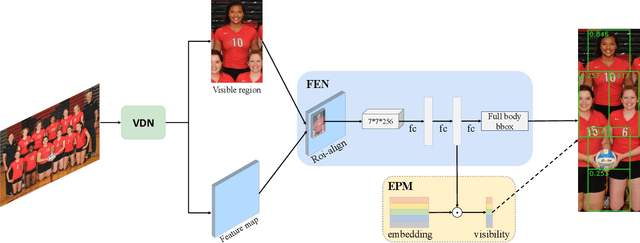Dawei Xiang
AI-Driven Prognostics for State of Health Prediction in Li-ion Batteries: A Comprehensive Analysis with Validation
Apr 08, 2025Abstract:This paper presents a comprehensive review of AI-driven prognostics for State of Health (SoH) prediction in lithium-ion batteries. We compare the effectiveness of various AI algorithms, including FFNN, LSTM, and BiLSTM, across multiple datasets (CALCE, NASA, UDDS) and scenarios (e.g., varying temperatures and driving conditions). Additionally, we analyze the factors influencing SoH fluctuations, such as temperature and charge-discharge rates, and validate our findings through simulations. The results demonstrate that BiLSTM achieves the highest accuracy, with an average RMSE reduction of 15% compared to LSTM, highlighting its robustness in real-world applications.
Neural Pruning for 3D Scene Reconstruction: Efficient NeRF Acceleration
Apr 01, 2025Abstract:Neural Radiance Fields (NeRF) have become a popular 3D reconstruction approach in recent years. While they produce high-quality results, they also demand lengthy training times, often spanning days. This paper studies neural pruning as a strategy to address these concerns. We compare pruning approaches, including uniform sampling, importance-based methods, and coreset-based techniques, to reduce the model size and speed up training. Our findings show that coreset-driven pruning can achieve a 50% reduction in model size and a 35% speedup in training, with only a slight decrease in accuracy. These results suggest that pruning can be an effective method for improving the efficiency of NeRF models in resource-limited settings.
GKAN: Explainable Diagnosis of Alzheimer's Disease Using Graph Neural Network with Kolmogorov-Arnold Networks
Apr 01, 2025Abstract:Alzheimer's Disease (AD) is a progressive neurodegenerative disorder that poses significant diagnostic challenges due to its complex etiology. Graph Convolutional Networks (GCNs) have shown promise in modeling brain connectivity for AD diagnosis, yet their reliance on linear transformations limits their ability to capture intricate nonlinear patterns in neuroimaging data. To address this, we propose GCN-KAN, a novel single-modal framework that integrates Kolmogorov-Arnold Networks (KAN) into GCNs to enhance both diagnostic accuracy and interpretability. Leveraging structural MRI data, our model employs learnable spline-based transformations to better represent brain region interactions. Evaluated on the Alzheimer's Disease Neuroimaging Initiative (ADNI) dataset, GCN-KAN outperforms traditional GCNs by 4-8% in classification accuracy while providing interpretable insights into key brain regions associated with AD. This approach offers a robust and explainable tool for early AD diagnosis.
NeRF-Based defect detection
Mar 31, 2025Abstract:The rapid growth of industrial automation has highlighted the need for precise and efficient defect detection in large-scale machinery. Traditional inspection techniques, involving manual procedures such as scaling tall structures for visual evaluation, are labor-intensive, subjective, and often hazardous. To overcome these challenges, this paper introduces an automated defect detection framework built on Neural Radiance Fields (NeRF) and the concept of digital twins. The system utilizes UAVs to capture images and reconstruct 3D models of machinery, producing both a standard reference model and a current-state model for comparison. Alignment of the models is achieved through the Iterative Closest Point (ICP) algorithm, enabling precise point cloud analysis to detect deviations that signify potential defects. By eliminating manual inspection, this method improves accuracy, enhances operational safety, and offers a scalable solution for defect detection. The proposed approach demonstrates great promise for reliable and efficient industrial applications.
Irregularity Inspection using Neural Radiance Field
Aug 21, 2024



Abstract:With the increasing growth of industrialization, more and more industries are relying on machine automation for production. However, defect detection in large-scale production machinery is becoming increasingly important. Due to their large size and height, it is often challenging for professionals to conduct defect inspections on such large machinery. For example, the inspection of aging and misalignment of components on tall machinery like towers requires companies to assign dedicated personnel. Employees need to climb the towers and either visually inspect or take photos to detect safety hazards in these large machines. Direct visual inspection is limited by its low level of automation, lack of precision, and safety concerns associated with personnel climbing the towers. Therefore, in this paper, we propose a system based on neural network modeling (NeRF) of 3D twin models. By comparing two digital models, this system enables defect detection at the 3D interface of an object.
V2F-Net: Explicit Decomposition of Occluded Pedestrian Detection
Apr 07, 2021



Abstract:Occlusion is very challenging in pedestrian detection. In this paper, we propose a simple yet effective method named V2F-Net, which explicitly decomposes occluded pedestrian detection into visible region detection and full body estimation. V2F-Net consists of two sub-networks: Visible region Detection Network (VDN) and Full body Estimation Network (FEN). VDN tries to localize visible regions and FEN estimates full-body box on the basis of the visible box. Moreover, to further improve the estimation of full body, we propose a novel Embedding-based Part-aware Module (EPM). By supervising the visibility for each part, the network is encouraged to extract features with essential part information. We experimentally show the effectiveness of V2F-Net by conducting several experiments on two challenging datasets. V2F-Net achieves 5.85% AP gains on CrowdHuman and 2.24% MR-2 improvements on CityPersons compared to FPN baseline. Besides, the consistent gain on both one-stage and two-stage detector validates the generalizability of our method.
 Add to Chrome
Add to Chrome Add to Firefox
Add to Firefox Add to Edge
Add to Edge